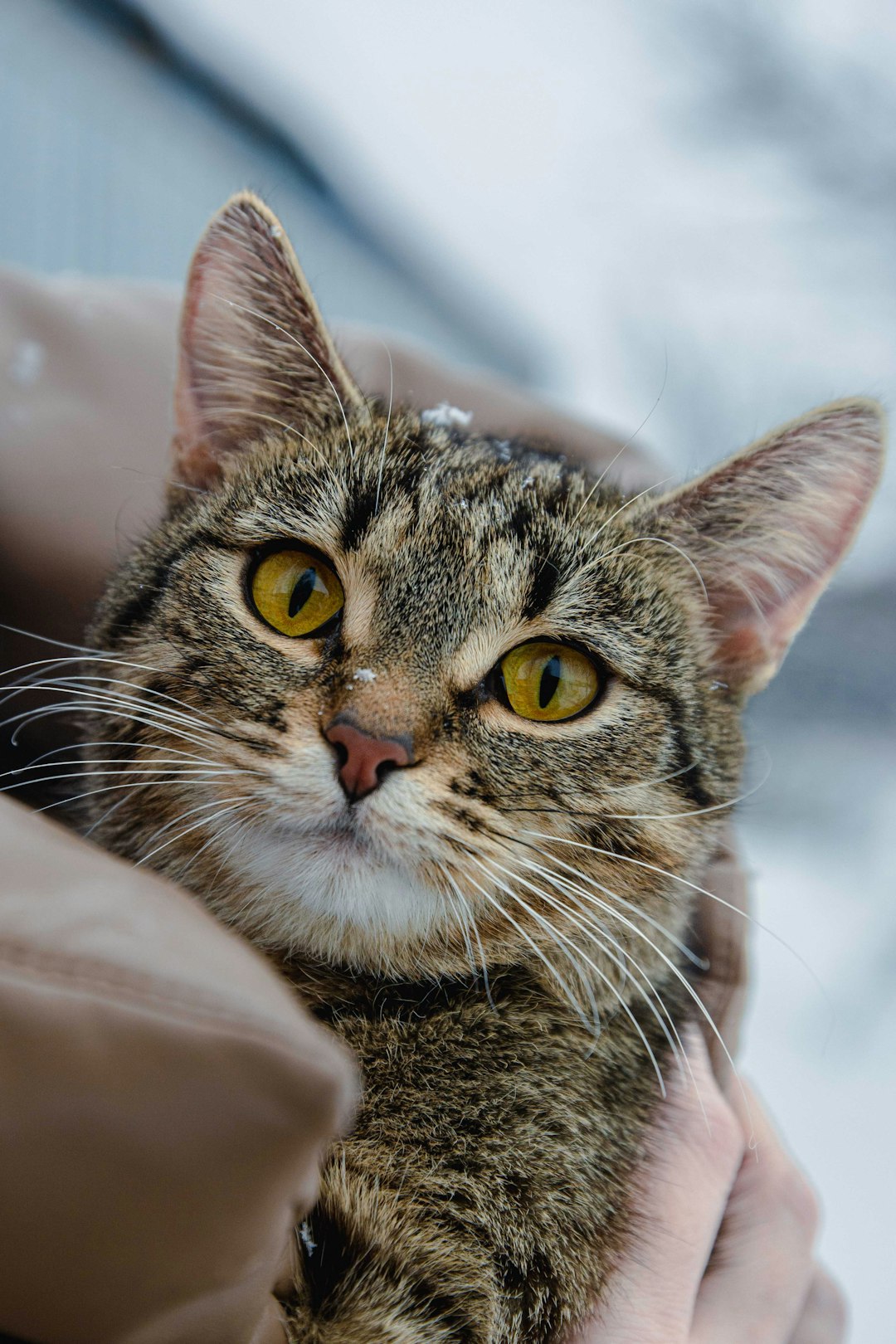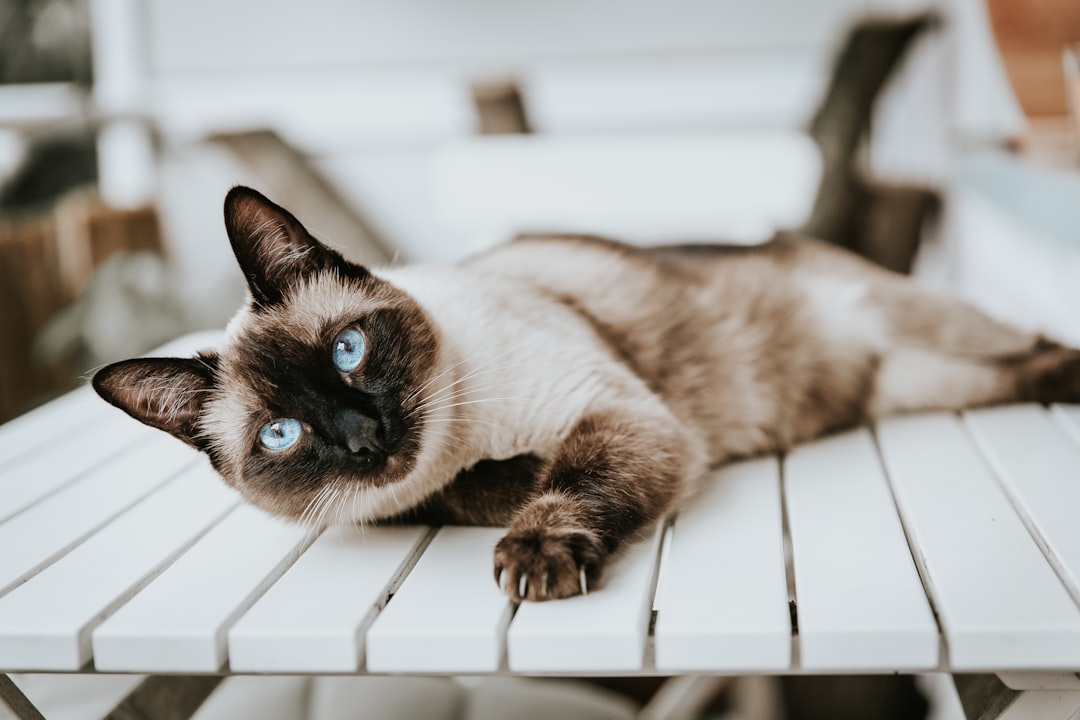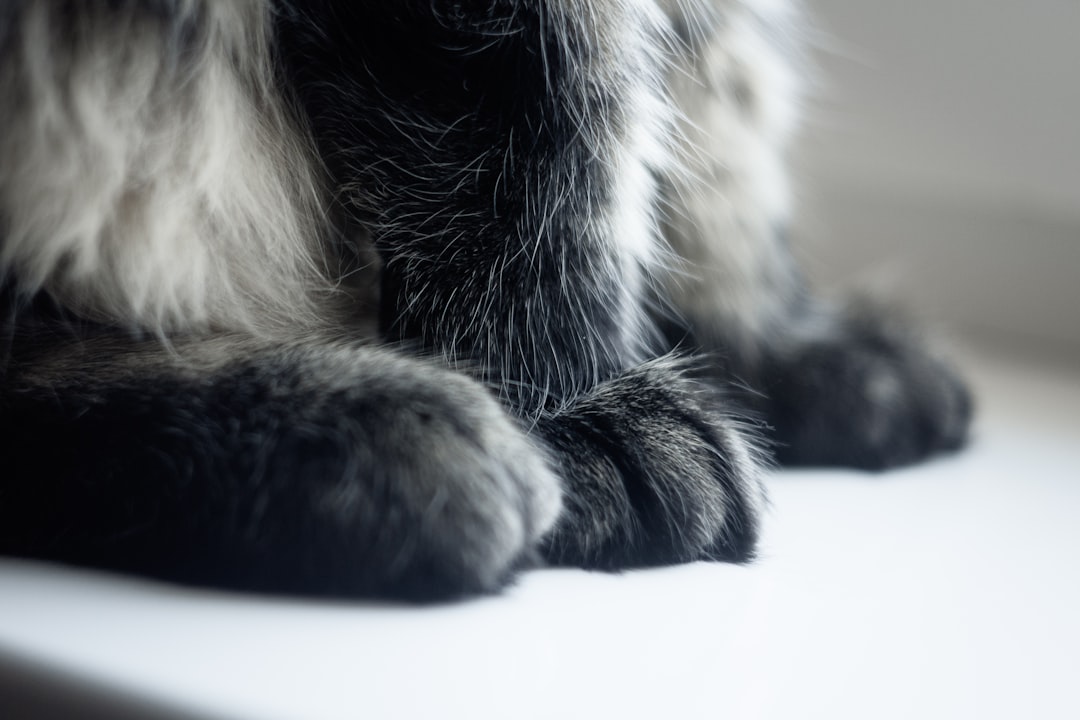Pet owners often overlook their feline friends’ emotional well-being, leading to unrecognized stress that can affect their health and behavior. Understanding feline stress is crucial, as symptoms may vary widely from one cat to another. In this insightful guide, we will explore Signs of stress in cats and delve into the emotional changes they experience in stressful situations. Furthermore, we will examine how the environment plays a pivotal role in shaping a cat’s anxiety levels, allowing you to recognize triggers effectively. By measuring stress levels and employing strategies to mitigate them, you can foster a calmer atmosphere for your furry companion. With the help of veterinary professionals and long-term management techniques, you can create a nurturing environment that supports your cat’s emotional health. Join us as we uncover essential insights to help you monitor and manage stress in your beloved pet.
Understanding Feline Stress
Feline stress is a common issue that can significantly impact a cat’s well-being and behavior. Recognizing and understanding signs of stress in cats is crucial for ensuring they lead happy, healthy lives. Cats can be sensitive creatures, and a sudden change in their environment or routine may trigger anxiety and stress.
What Causes Stress in Cats?
When it comes to identifying stress in our feline friends, it is essential to know the common triggers. Below is a table summarizing potential stressors:
| Potential Stressors | Description |
|---|---|
| Environmental Changes | Moving to a new home or rearranging furniture. |
| Loud Noises | Thunderstorms, fireworks, or construction sounds. |
| New Pets or People | Introduction of unfamiliar animals or visitors. |
| Health Issues | Illness or pain that may cause discomfort. |
| Changes in Routine | Variations in feeding, playtime, or litter box maintenance. |
The Importance of Recognizing Stress
Understanding and recognizing stress in cats is vital for their health and happiness. Here are a few reasons why:
- Preventing Behavioral Issues: Stressed cats may exhibit undesirable behaviors such as aggression or hiding. Recognizing stress early can help prevent these issues from escalating.
- Health Implications: Chronic stress can lead to health problems like obesity, urinary disorders, or digestive issues. Identifying stress signals can enable timely interventions.
- Enhancing Quality of Life: By understanding their stress triggers, owners can create a soothing environment that promotes a cat’s well-being and happiness.
In conclusion, being proactive and knowledgeable about feline stress not only aids in managing their emotional health but also strengthens the bond between pets and their owners.
Signs of Stress in Cats
Recognizing when your cat is under stress can be crucial for their well-being. By observing specific signs of stress in cats, you can take appropriate actions to alleviate their discomfort.
Behavioral Indicators
Cats may exhibit several behavioral changes when stressed. These include:
| Behavioral Changes | Description |
|---|---|
| Increased Aggression | Sudden hostility towards people or other pets. |
| Social Withdrawal | Avoiding interaction and hiding in secluded spots. |
| Pacing or Restlessness | Constant movement or inability to settle down. |
| Excessive Grooming | Over-grooming leading to bald patches or skin irritation. |
| Vocalization Changes | Increased meowing, growling, or other vocal expressions. |
Physical Symptoms
In addition to behavioral shifts, stress can manifest physically. Key physical signs to look out for include:
| Physical Symptoms | Description |
|---|---|
| Changes in Eating Habits | Decreased appetite or overeating due to anxiety. |
| Litter Box Issues | Marked changes in litter box use, including avoidance. |
| Body Posture | Hunched back or tucked tail indicating discomfort. |
| Dilated Pupils | Enlarged pupils as a response to stress. |
| Excessive Scratching or Biting | Unusual focus on certain body parts due to anxiety. |
Understanding these indicators is key to providing timely support, making it easier to create a calming environment. Always pay attention to your cat’s habits; any significant deviations may indicate stress and should prompt further investigation.
Emotional Changes in Stressed Cats
Understanding the emotional landscape of a cat experiencing stress is crucial for their well-being. When cats are under duress, their behaviors can exhibit significant changes that are vital for pet owners to recognize.
Changes in Social Behavior
Stress often leads to noticeable shifts in a cat’s interaction style. Unlike their usual affectionate nature, stressed felines may display signs of withdrawal or aggression. Here’s a quick comparison:
| Behavior | Normal Cat Behavior | Stressed Cat Behavior |
|---|---|---|
| Approachability | Seeks attention from owners | Hides or avoids interaction |
| Playfulness | Engages in play | Reluctant to play or engage |
| Aggression | Calm and friendly | Frequently swats or hisses |
If you notice your cat avoiding contact or displaying sudden aggression, it’s essential to consider these signs of stress in cats as a signal that they need support.
Altered Eating Patterns
Stress can also significantly impact a cat’s appetite. Changes might manifest as overeating or, conversely, a complete loss of interest in food. Pay attention to these indicators:
| Eating Habit | Normal Eating Behavior | Stressed Eating Behavior |
|---|---|---|
| Regular Feeding | Eats consistently and regularly | Skips meals or overeats |
| Weight Management | Maintains a healthy weight | Noticeable weight loss/gain |
A cat’s emotional state will dramatically influence their dietary habits. Sudden changes could signify underlying stress, requiring immediate attention. By being vigilant and understanding the emotional changes in stressed cats, owners can take proactive steps to alleviate their feline’s anxiety.
The Impact of Environment on Stress Levels
Creating a nurturing and secure environment is crucial for maintaining your cat’s mental health. Various factors within your cat’s habitat can contribute to stress, highlighting the importance of considering their surroundings.
Home Environment Factors
The home environment plays a significant role in your cat’s stress levels. Common factors include:
| Factor | Impact on Stress Levels |
|---|---|
| Space | Limited space can lead to feelings of confinement. |
| Noise | Loud sounds (e.g., vacuum cleaners) can increase anxiety. |
| Household Traffic | Frequent visitors or high activity can overwhelm your cat. |
| Litter Box Placement | Inaccessible or dirty litter boxes can add stress. |
Understanding these elements can help you create a more calming atmosphere. For instance, designating quiet spaces and reducing loud noises can significantly enhance your cat’s comfort.
Role of Shelter and Safety
Cats are instinctively drawn to safe, sheltered areas where they can retreat when feeling threatened.
- Hiding Spots: Providing access to small, cozy hiding spots enables your cat to feel secure and reduce anxiety.
- Vertical Space: Cats often feel safer when they can observe their surroundings from a height. Items like cat trees create additional safe spaces.
Combining these strategies can help foster a sense of security, ultimately mitigating signs of stress in cats. Addressing environmental factors is a crucial part of ensuring that your feline friend maintains a calm and happy disposition.
Recognizing Stress Triggers
Understanding and identifying stress triggers is crucial in minimizing anxiety in your feline friend. Cats can experience various stressors, often stemming from their environment or changes in routine. Awareness of these triggers will enable you to create a more harmonious atmosphere in your home.
Common Triggers in Households
Below are some common household triggers that can lead to Signs of Stress in Cats:
| Trigger | Description |
|---|---|
| Loud Noises | Sudden sounds like thunderstorms, fireworks, or even loud appliances can frighten cats. |
| Change in Routine | Alterations in feeding schedules, playtime, or visitors can disrupt their sense of security. |
| New Pets or People | Introducing new animals or guests can lead to territorial stress and anxiety. |
| Environmental Changes | Rearranging furniture or bringing in new items can confuse your cat. |
Identifying Individual Triggers
Each cat is unique, and understanding their specific triggers requires observation. Consider the following steps:
- Observe Behavior: Pay attention to what happens before stress-related behaviors arise. For example, does your cat hide when the doorbell rings?
- Keep a Journal: Document incidents, including date, time, and the context around stressful events, to identify patterns.
- Trial and Error: Gradually introduce changes and monitor your cat’s reactions, adjusting accordingly based on their comfort level.
Recognizing stress triggers plays a significant role in managing your cat’s emotional well-being. Once identified, you can implement strategies to reduce or eliminate these stressors. Understanding and addressing your feline’s unique needs will ultimately lead to a healthier, happier household.
Measuring Stress Levels in Cats
Behavioral Monitoring Techniques
Recognizing when your feline friend is stressed is vital for their well-being. One effective method of measuring stress is through behavioral monitoring. Here’s how you can observe your cat’s behavior:
| Behavioral Signs | Description |
|---|---|
| Increased aggression | Cats may hiss, growl, or swat at family members or other pets. |
| Hiding | A stressed cat might retreat to dark or enclosed spaces. |
| Excessive grooming | Cats may groom themselves more than usual, potentially leading to skin issues. |
| Litter box aversion | Changes in bathroom habits can indicate discomfort or anxiety. |
| Changes in appetite | Reduced or increased food intake often signifies stress. |
By maintaining a daily log of these behaviors, you can identify patterns and triggers over time.
Using Stress Assessment Tools
In addition to observational methods, employing stress assessment tools can provide more concrete measurements. Some popular tools include:
| Tool | Description |
|---|---|
| Feline Stress Scale | A scoring system that quantifies various stress indicators based on observed behavior. |
| Pheromone Diffusers | These devices release calming scents that can help reduce observable signs of stress for better assessment. |
| Heart Rate Monitors | Monitoring your cat’s heart rate can reveal anxiety levels, particularly during stressful situations. |
Utilizing these techniques can yield insights into your cat’s emotional health, allowing for timely intervention and care. Understanding and measuring stress levels in cats can be pivotal in creating a nurturing environment that promotes relaxation and happiness.
Mitigating Stress in Cats
Creating a Calming Environment
Creating a soothing space for your feline friend is crucial in reducing signs of stress in cats. Here are some effective strategies:
- Safe Zones: Designate areas in your home where your cat can retreat. These can include cozy beds or hideaways, ensuring they feel secure.
- Comfort Items: Use familiar items like blankets or toys, which provide a sense of security.
- Diminishing Noise: Minimize loud sounds such as traffic or vacuum cleaners that can frighten or agitate your cat.
- Soothing Scents: Consider using cat-safe pheromone diffusers that mimic natural scents to create a stress-free atmosphere.
| Environment Control Tips | Description |
|---|---|
| Safe Zones | Designate quiet, hidden spaces for your cat to retreat to. |
| Comfort Items | Provide familiar blankets and toys to ease anxiety. |
| Diminishing Noise | Reduce loud sounds and disturbances in the household. |
| Soothing Scents | Use pheromone diffusers for a calming scent. |
Enrichment Activities and Play
Engaging your cat in stimulating activities is essential for mental stimulation and stress mitigation. Here are some suggestions:
- Interactive Toys: Invest in toys that promote active play, such as feather wands or puzzle feeders.
- Scheduled Playtime: Dedicate time each day for interactive play, aiding in strengthening your bond.
- Environmental Enrichment: Create vertical spaces like shelves or cat trees where your cat can explore and feel comfortable.
| Enrichment Activities | Benefits |
|---|---|
| Interactive Toys | Encourage physical activity and mental stimulation. |
| Scheduled Playtime | Build trust and enhance your relationship. |
| Environmental Enrichment | Provide opportunities for exploration and fun. |
By implementing these strategies, you can effectively mitigate signs of stress in cats, thereby contributing to their overall well-being.
The Role of Veterinary Professionals
When to Consult a Veterinarian
Recognizing the signs of stress in cats is crucial for their well-being, and when these signs become apparent, it’s vital to consult a veterinarian. Certain behaviors, such as excessive hiding, inappropriate elimination, or aggressive tendencies, may indicate that your cat is experiencing more than just mild anxiety. If you notice these behaviors persisting for more than a few days or worsening over time, it’s time to seek professional help. A veterinarian can assess your cat’s health, rule out any underlying medical conditions, and provide tailored advice to address the stress factors affecting your feline friend.
Treatment Options for Feline Anxiety
Veterinarians offer a variety of treatment options to help manage anxiety in cats. These treatments can range from behavioral therapy to medications. Below is a quick overview of common treatment strategies:
| Treatment Option | Description |
|---|---|
| Behavioral Therapy | Techniques like desensitization and positive reinforcement help cats adapt to stressors. |
| Medications | Anti-anxiety medications can help alleviate extreme stress, tailored to each cat’s needs. |
| Nutritional Supplements | Natural supplements, such as pheromones or calming treats, can provide additional support. |
| Environmental Modifications | Adjustments in the home environment, such as creating safe spaces, can dramatically reduce stress. |
Veterinary professionals play a pivotal role in developing a comprehensive treatment plan, ensuring that your cat not only overcomes stress but also thrives in a relaxed environment. By taking these steps, you can help your cat lead a happier, healthier life.
Long-term Strategies for Stress Management
Consistency and Routine
Establishing a consistent routine is crucial for reducing anxiety in cats. Cats are creatures of habit who thrive on predictability. A daily schedule can include regular feeding times, play sessions, and quiet time. This rhythm helps your feline friend feel secure, minimizing the signs of stress in cats that can arise from unpredictability. According to studies, cats may exhibit fewer behavioral issues when their humans maintain a structured routine.
| Routine Element | Benefits |
|---|---|
| Feeding | Prevents anxiety over food availability |
| Playtime | Enhances bonding and alleviates boredom |
| Quiet Time | Encourages relaxation and comfort |
Building a Strong Bond with Your Cat
Developing a strong bond with your cat is another vital aspect of stress management. Positive interactions can foster a sense of safety and trust, reducing the likelihood of stress-related behaviors. Engaging in activities like interactive play, gentle grooming, or simply talking to your cat can significantly enhance your relationship. The more trusted you are, the lower the signs of stress in cats will be.
| Bonding Activity | Impact on Feline Stress |
|---|---|
| Interactive Play | Provides mental stimulation and physical exercise |
| Gentle Grooming | Enhances trust and can serve as a calming routine |
| Relaxed Talking | Creates a soothing environment, reducing anxiety |
By focusing on these long-term strategies, you can help your cat lead a more relaxed and fulfilling life.
Conclusion on Monitoring Cat Stress
The Importance of Ongoing Observation
Monitoring your cat’s stress levels is an essential part of responsible pet ownership. Regular observation can help you recognize signs of stress in cats before they escalate into serious behavioral issues. By being attentive to your cat’s body language and daily habits, you can quickly identify subtle changes that may indicate anxiety. Use the following table to note key signs and their implications:
| Signs of Stress | Potential Implications |
|---|---|
| Hiding or withdrawal | May indicate fear or anxiety |
| Excessive grooming | Commonly linked to stress |
| Changes in appetite | May signal emotional distress |
| Vocalization changes | A cry for attention or help |
By tracking any unusual behavior, you can respond proactively and create a more comfortable environment for your furry friend.
Encouraging Stress-Free Living
Creating a stress-free living environment is crucial for your cat’s well-being. Consider implementing routines that promote stability and predictability. Here are some strategies to foster a sense of security for your feline companion:
- Safe Spaces: Provide cozy hideaways where your cat can retreat when feeling overwhelmed.
- Interactive Play: Engaging in regular playtime can help reduce anxiety and build trust between you and your pet.
- Consistent Schedule: Feeding and playtime at the same hours daily provide a comforting routine that helps lower stress levels.
By focusing on ongoing monitoring and encouraging a stress-free lifestyle, you can significantly improve your cat’s quality of life while keeping anxiety at bay.
Frequently Asked Questions
What are the common signs of stress in cats?
Cats can exhibit a variety of signs when they are stressed. Common indicators include changes in behavior such as withdrawal, aggression, or excessive grooming. You might also notice physical symptoms like weight loss, reduced appetite, or litter box avoidance. Additionally, vocalization changes, such as increased meowing or growling, can signal stress. It’s important to pay close attention to these signs, as they can indicate underlying issues that may require intervention.
How can I help my cat feel more relaxed and less stressed?
To help your cat relax, create a calm and safe environment. This can be achieved by providing cozy hiding spots, maintaining a consistent routine, and minimizing loud noises. Engaging your cat in regular play can also reduce anxiety by providing exercise and mental stimulation. Additionally, consider using pheromone diffusers designed for cats, as these can help create a more soothing atmosphere. If stress persists, consulting with a veterinarian or a pet behaviorist may provide further insights and solutions.
Is stress in cats a serious issue?
Yes, stress can have serious long-term effects on a cat’s physical and mental health. Prolonged anxiety can lead to issues such as depression, aggression, or even the development of stress-related illnesses, including urinary tract problems and gastrointestinal issues. Therefore, addressing and mitigating stress in your cat is crucial. If you notice chronic stress symptoms, it is important to seek advice from a veterinarian to develop a comprehensive plan for your cat’s well-being.
What are some potential causes of stress in cats?
Cats can experience stress due to various factors, including changes in their environment, such as moving to a new home or the introduction of new pets. Other causes might include loud noises, inconsistent daily routines, and even health issues. Additionally, social stressors like interactions with unfamiliar humans or pets can also contribute to feline anxiety. Understanding these triggers can help cat owners create a more stable environment for their pets.
When should I consult a veterinarian about my cat’s stress?
If you notice persistent signs of stress in your cat, it is advisable to consult a veterinarian. Signs that warrant a visit include drastic behavioral changes, loss of appetite, excessive grooming, or any physical symptoms like vomiting or lethargy. A veterinarian can assess your cat’s health, ruling out any medical conditions that may be causing stress, and can recommend appropriate treatment options or behavioral therapies to help your feline feel more at ease.



